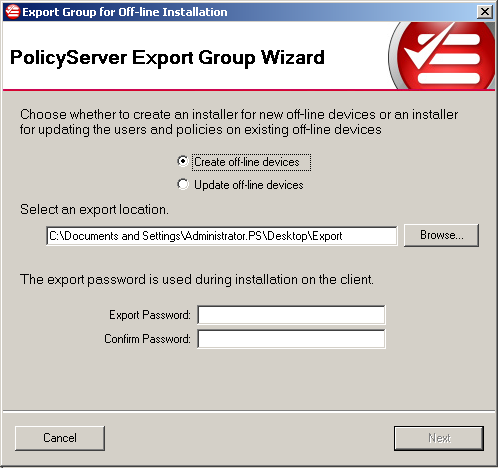|
|
|
NoteExported groups must contain at least one
user. The group name must also be alphanumeric only.
|

NoteThe export password is used to authenticate the executable on the
agent.
|
|
Installation File
|
Purpose
|
|---|---|
|
FileEncryptionIns.exe
|
Installs the File Encryption
agent.
|
NoteFor older Endpoint Encryption product versions,
see the supporting documentation.
|
Exportis created on the desktop. Use this to distribute policy changes to offline groups.